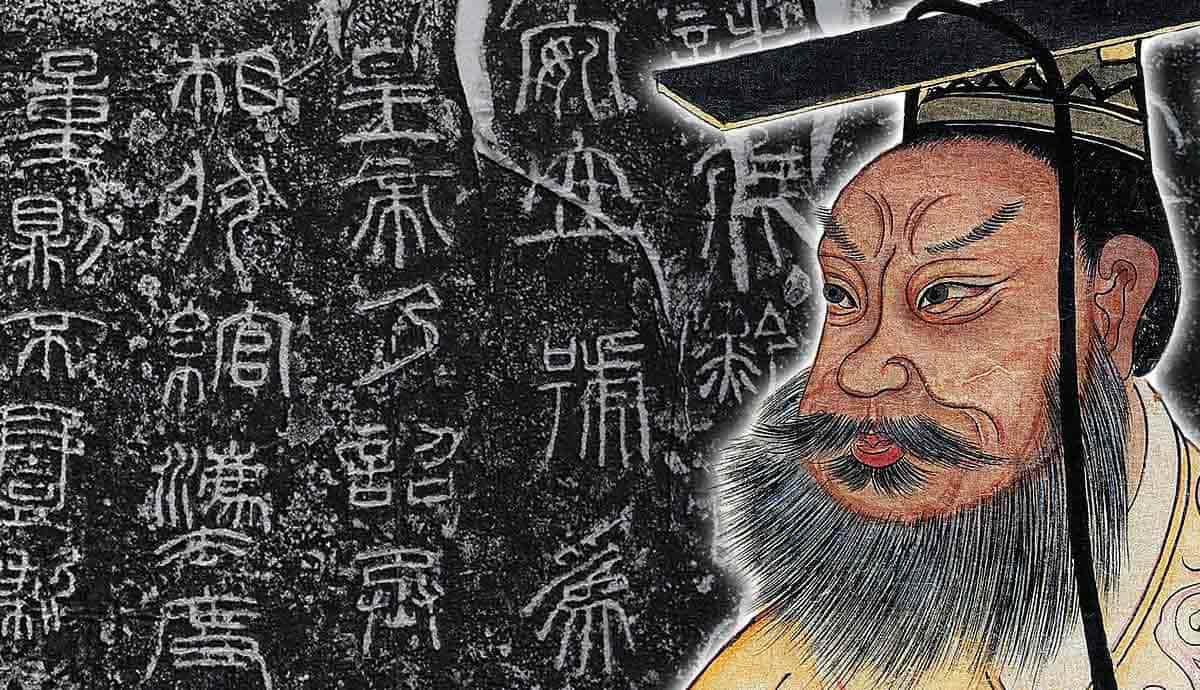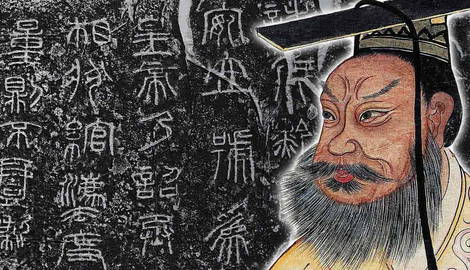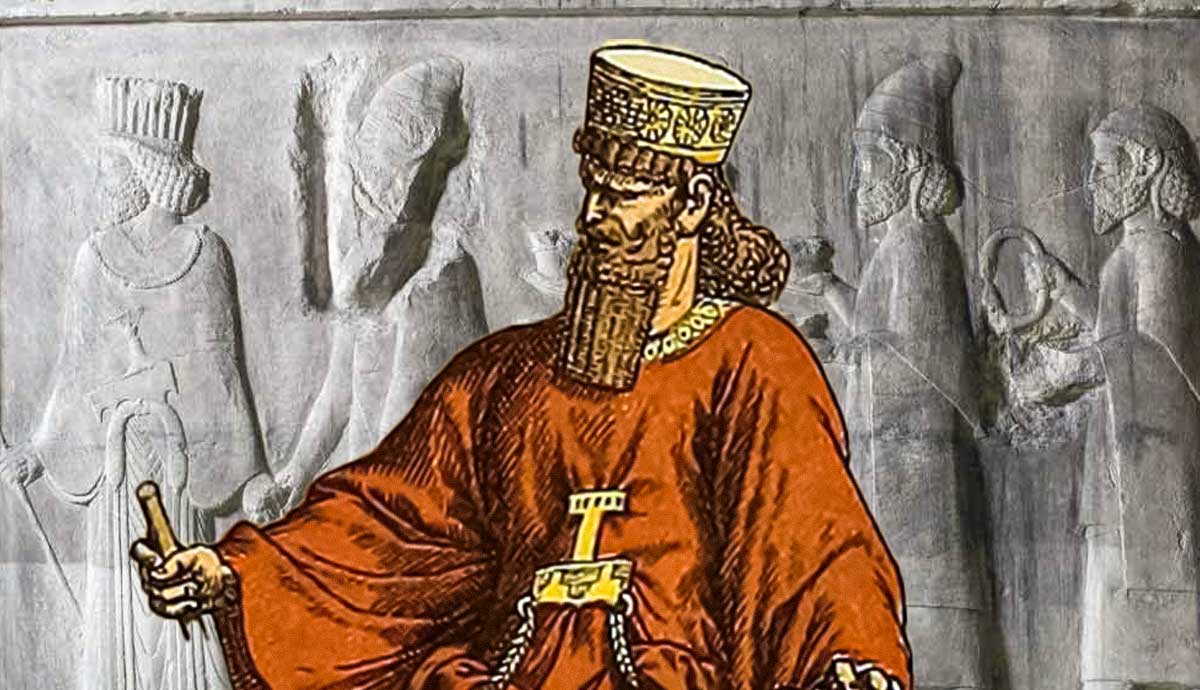
Few dynasties have had the cultural or historical impact that the Qin Dynasty had. China has a rich, varied, and sometimes complex history—but it all had to start somewhere. The Qin Dynasty was ancient China’s first imperial dynasty, and its legacy meant that China would be ruled by imperial dynasties (more or less) for over 2,000 years. Despite being the shortest-lived of all the major Chinese dynasties, the Qin deserves to be remembered in equal stead when compared to other major Chinese dynasties such as the Ming, Song, and Tang.
The Origins of the Qin Dynasty

The short-lived tenure of the Qin Dynasty (221-206 BCE) does not mean that its origins were equally as short. On the contrary, the origins of the Qin Dynasty can be traced back well over 100 years before the dynasty itself was established.
Much of the groundwork for the establishment of the Qin can be traced back to the period of Chinese history known as the Warring States Period. While this era lasted for centuries, the period during which the Qin originated came towards the end of the Warring States Period, hence it being such a significant moment in Chinese history.
At that time, imperial China was made up of seven states (Han, Yan, Zhou, Wei, Chu, Qi, and Qin). The leading state was Zhou, who ruled using an early form of dynastic rule. Zhou was the superior state, and the Qin were often thought of as less developed than those who lived in Zhou. A notable example is that the Zhou stopped human sacrifices many years before the Qin did. It was almost a point of moral superiority as to why the Zhou ruled.
It was through centuries of oppression and years of strategic planning such as diplomatic marriages that the Qin managed to formally start their own dynasty.
The Influence of Duke Xiao and Shang Yang

Duke Xiao was the ruler of the Qin state from 361 to 338 BCE, and it was during his reign that the majority of the preparations for war were made. The appointment of his advisor and close political ally Shang Yang (who was originally from the state of Wei) as chancellor really set the wheels in motion.
Shang Yang was one of the first statesmen recorded to openly speak about a unified China, rather than several states having their own set of rules, loosely “united” together under the notion of Chinese identity.
One of the ideas that Shang Yang is credited with is the expansion of the Chinese army in the state of Qin. Instead of the nobility marshaling soldiers for their own private armies, Shang Yang suggested that peasants should have the choice to enlist, in return for more land. This idea went down a storm, and huge numbers of peasants enlisted, greatly swelling the numbers of the Qin army—and because land was cheaper than money, the cost of maintaining such an army was incredibly low.
However, the phrase old habits die hard comes to mind. Following Duke Xiao’s death in 338 BCE, the aristocracy (who were likely afraid or uncomfortable with Shang Yang’s seemingly radical ideas about state reform) charged Shang Yang with treason, and he was sentenced to death, which involved the excruciatingly painful punishment of having his body torn limb from limb by five chariots.
However, the seeds were already planted in the Qin state. The revolution was coming.
The Unification of China Under Emperor Qin

The rise of the Qin from 316 BCE onwards can be traced to the early expansion of the state when the microstates of Ba and Chu went to war. Both states pleaded with the Qin for help in the form of resources and men, but the Qin responded by conquering them both and therefore expanding their own territory.
As the territory of the Qin grew, so did its influence and power. Over the course of the next 40 years, the Qin relocated thousands of families into the newly conquered territory to fortify it and make use of the agricultural land that had come with it, adding another stream of revenue to the governance of the Qin state.
Ying Zheng took control of the Qin state aged 13 years old. He is often considered the first Emperor of China—his claim came from the fact that he was the son of King Zhuangxiang of Qin, who died after three years on the throne in 247 BCE.
Upon becoming Emperor, he took the regal name Qin Shi Huang Di, meaning “the first emperor of Qin.” His early years took on the form of a military-expansionist policy, much as he had seen growing up in the Qin state as a young boy.
The biggest breakthrough came in 221 BCE, when the Qin had successfully taken the territory of all the remaining Zhou states, formally establishing the Qin Dynasty.

Naturally, incorporating seven states and their different cultures, landscapes, and territories under one label—the Qin Dynasty—needed some serious work. How could all these people simply be united under one banner?
Arguably the most important step that Emperor Qin took was to revise the Chinese alphabet—this immediately standardized letter-writing under one script and language, replacing all of the individual state alphabets and languages. While this can seem like a huge loss to history and especially to cultural historians, the unification of China under the Qin Dynasty would have been almost impossible without such a drastic step.
It was also important to unify the language so that those in different areas of the empire could communicate with one another. Because this required most people to learn a new language and writing system, it inadvertently led to the creation of several academies (early universities) throughout the empire, to help with the learning of the new script and language.
Another cultural unification under the Qin was the standardization of the economy—which again, was another absolutely necessary step. Different states had used different currencies, but the Qin opted to use bronze coins for trade and commerce purposes.
The alphabet and the economy were the two most important aspects of unification, and the Qin managed to get both of them right. This helped to unify the Warring States for the first time in history, and the Qin rightly deserved to rule them as one. The name China even comes from an archaic spelling of Qin, which was sometimes written as Ch’in.
Culture Under the Qin Dynasty

The majority of the population in the Qin Dynasty was made up of peasants—approximately 90% of the population, according to some recent estimates. Most of these people rarely left their villages or towns their whole lives, and while there were a number of professions available, the Qin Dynasty was largely characterized by farming. Just as the emperor inherited his position through his father, the sons of peasants would inherit their father’s job—so most families worked as farmers for generation upon generation.
Perhaps the most important cultural creation during the Qin Dynasty was the beginning of one of the Seven Wonders of the World: the Great Wall of China.
The Qin constructed a 500-mile-long road, which was called the Qinzhidao (literally translated as “Straight Road”), which ran across the Ziwu Mountain Range. This road was key in the development of the Great Wall of China, as it helped to transport materials from quarries to the wall itself.
The wall was built as a northern defense against other states, and these walls would eventually become connected together, forming what would come to be, centuries later, the Great Wall of China.
A man named Meng Tian oversaw this immense construction project, and it is estimated that over 300,000 workers were brought to work on the wall in the Qin Dynasty alone—showing how culturally significant it really was.
Qin Shi Huang’s Tomb

If the Great Wall of China was the most significant cultural monument from the Qin Dynasty, then Qin Shi Huang’s tomb was the second.
Throughout his life, Emperor Qin loved the building of extravagant monuments. In fact, in his magnificent capital city of Xianyang, he commissioned replica buildings of his conquered enemies’ state palaces to be built, each serving as a reminder that their territory was now his.
Unsurprisingly, he spared no expense when it came to planning his own final destination. His tomb would also, two millennia later, go on to become one of the Modern Wonders of the World. He sent 700,000 workers to create a magnificent tomb at the base of the Lishan Mountains.
This was no ordinary burial place, though—it was an underground city complex that was designed so that Emperor Qin could rule in the afterlife, or rule from beyond the grave.
This “city” included temples, chambers, magnificent halls, bronze sculptures, animal burial grounds, administrative buildings, a replica of the Imperial Armory, a fishpond, and a river. But this was not the most impressive aspect: the most impressive (and famous) aspect was the replica Terracotta Army—made up of statues of everyone from soldiers to acrobats to government officials and more—all to guard the emperor’s tomb.
The End of the Qin Dynasty and Its Legacy

For such an extravagant man, it comes as little surprise that his death was no simple affair, either. Qin died while on tour in eastern China in 210 BCE, but his officials wanted to keep his death a secret.
In order to do so, they stored his body in fish barrels to disguise the smell of his rotting corpse, and forged a letter to Fu Shu, the crown prince, ordering him to commit suicide. Remarkably, Fu Shu did commit suicide, and Emperor Qin’s younger son, Qin Er Shi, took control of the realm.
After centuries of hard work leading up to the establishment of the Qin, it lasted less than three years under the rule of Qin Er Shi.
The majority of the empire had revolted against the new empire, and when 90% of the population was made up of farmers, it was hard to combat them. Constant revolts and rebellions left the coffers empty and the emperor and his officials exhausted.
The final moment came when the warlord Xiang Yu defeated the Qin army in a pitched battle in 207 BCE, and the emperor was executed and the empire split into eighteen different states.
This would only last until 202 BCE when a leader of one of the states, Liu Bang (who was given the Han Valley to rule), waged war against Xiang Yu. Xiang Yu committed suicide, and Liu Bang took the reigns—formally establishing the Han Dynasty while doing so.
Of all major Chinese dynasties, the Qin is sadly often overlooked. However, due to its role in unifying the Warring States, it should be held in much higher esteem. Furthermore, it was the Qin who really set the foundations for Chinese dynastic rule (for better or for worse) for the next 2,000 years—a feat that cannot be underestimated.








